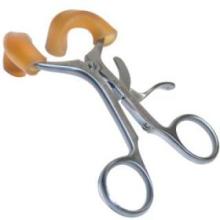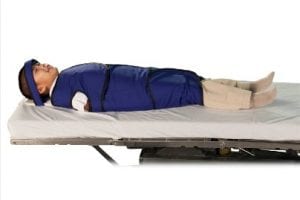My daughter is eight. She is a sweet, cooperative little girl, and generally healthy. We have maintained consistent dental habits, which include flossing and using mouthwash daily. She was recently diagnosed with a cavity at her last dental checkup.
When we returned to the dentist office for the cavity to be filled, she seemed a bit fidgety. It was as if she couldn’t get comfortable, and was nervous. This wasn’t surprising, as this was the first dental procedure she’d undergone. Therefore, I decided to leave the room, thinking my presence was causing her to be additionally worried, as sometimes has happened with her.
After some time had passed, I assumed everything was going smoothly, until I heard her screaming. When I rushed into the exam room, I found her curled into a ball on the table, unable to be consoled by the dentist or his assistant.
The dentist exited the room, to give me an opportunity to calm her down. When I asked the assistant to tell me what happened, she informed me that my daughter had clamped down on the dentist’s hand when he was trying to numb her, biting him, then began flailing and flinging her arms and legs. This also caused her to bite down on the drill, which cracked his tooth.
The dentist returned to check in on my daughter, but mentioned to me that a pediatric dentist may be a better fit.
I am concerned about the trauma this caused her, and what to do going forward. She is now in need of a crown, and I want to be sure this situation does not repeat itself. Should I consider sedation prior to her next procedure? I know very little about it, or its possible side effects, but know that my daughter cannot have another experience like this one.
Any guidance you can provide would be greatly appreciated.
Sincerely,
Janice
Dear Janice,
It is unfortunate that your daughter went through this experience, especially considering she had several positive dental visits prior to this one.
It is good that your dentist suggested you find see a pediatric dentist, especially since she now has further damage, and has experienced such trauma. Perhaps you could schedule a routine checkup for your daughter with a pediatric dentist first. This way, she can learn about the dentist, become familiar with the office, and understanding what goes into a child’s first visit to a dentist.
Once she has a positive experience with the dentist, you could schedule a follow-up appointment for the crown procedure. And, you are correct, sedation dentistry may be the best option for her. But, dental anxiety is best addressed by communicating with your dentist. Perhaps you can privately share about her previous dental experience. This way, the pediatric dentist can help you determine if sedation dentistry is the route you should go, or, if there are other ways to address her nervousness and anxiety.
The right choice will ultimately depend on what types of sedation the dentist offers, as well as what you feel is the best fit for your daughter.
This blog post is brought to you by the office of Dr. Matt Roper, a Gilbert sedation dentist.

